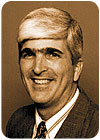
As the consensus process settles in for the International Association of Plumbing and Mechanical Officials (IAPMO), major changes continue to appear in the Uniform Plumbing Code (UPC). The IAPMO Plumbing Technical Committee (TC) was one of the most diverse since the switch to the consensus committee. One could not help but be amazed by the quality of the technical discussions on each proposed code change.
Some have lamented that IAPMO would never accept non-water-supplied urinals nor air admittance valves. Similar sentiments were expressed regarding plastic pipe or horizontal wet venting. However, the 2006 UPC proudly displays that plastic pipe has no restrictions and horizontal wet venting is approved.

Many Big Steps
A big step in the code transformation occurred at the code meeting in St. Louis, MO, the last week of April. On the first day of the three-day meeting, non-water-supplied urinals were added to the code. A proviso for a water supply in the wall was included with the approval. However, it should be noted that the proviso was proposed by the manufacturers of the non-water-supplied urinals.The addition of a water supply is intended to reduce the fears of those who question the technology of non-water-supplied urinals. If a switch is to be made to water-supplied urinals, the water supply is available at a minimal cost.
By the second day, onlookers were wondering how air admittance valves would fair. There were a number of changes proposed to Chapter 9 of the code. When the changes were introduced, the discussions were the same as they have always been. A long presentation by a manufacturer could have easily been a recording of past years. Those opposed provided the same reasons. Numbers, facts and figures flew back and forth.
The first shock came when the vote to approve was taken. Many were not counting the votes, only looking at the hands going up. The chairman gave a funny look when he said, “Let’s count again.”
His first count ended in a tie vote. After recounting, the vote was still tied. There were a number of abstentions. The chair was somewhat exasperated when he indicated that he would prefer that a subject of this importance not be decided by a tie-breaking vote of the chair. Other TC members stated that the chair could abstain and the motion would fail. The chair decided to turn the action back to the TC. If a motion was made to reject the change, a similar tie vote was possible.
The TC continued to discuss the dilemma when it was suggested that perhaps air admittance valves would be better placed in Appendix L as part of engineered plumbing design. I couldn’t help but mention that there was an American Society of Plumbing Engineers (ASPE) code change coming up that would do exactly that, and the TC didn’t have to tinker with modifying the proposed change.
The TC tabled the changes to Chapter 9 and moved on to the change proposed to Appendix L. After a brief discussion, the ASPE change to add air admittance valves was approved by a much greater majority. The remaining changes were rejected, with a preference for the change to add the technology to the appendix.
The acceptance of new technology continued. The Plumbing and Drainage Institute proposed changes to modify the method of sizing grease interceptors. All of these changes were approved.
ASPE proposed the addition of its new standard ASPE 45 on Siphonic Roof Drainage Design. The change was overwhelmingly approved.
Another ASPE change to allow for engineered design of a vent system also was approved. A reference to Appendix L will appear with the change. Another change that will help in the design of engineered vent systems was the requirement that the vent system maintain a pressure differential at the outlet of the trap seal of 1 inch of a water column. While the venting requirements in the UPC have long been based on this principle, it has never been stated in the code.
A Couple Hot Buttons
One of the hot buttons that separates the UPC from other plumbing codes has been the sizing method used for determining the size of drainage and vent pipes. While the sizes are often identical, the method is different. The DWV Sizing Task Group proposed a change to add a sizing method to Appendix L that was extracted from the ASPEPlumbing Engineering Design Handbook (Data Book).
While the new sizing method will be in the appendix, it removes the last remaining difference between the plumbing codes. The common sizing method used by engineers, and developed by Dr. Roy B. Hunter, will be available in the UPC, based on this action.
Another area of the code with many changes was the grey water and reclaimed water chapter. Leading up to the changes, it was obvious that those from Southern California and Arizona viewed reclaimed water as something a public utility provides. Others viewed reclaimed water as a part of a green building design with local treatment.
A break was called by the chairman so issues could be sorted out regarding reclaimed water. It appeared that the code changes were too important to allow wrangling on the floor. After the break, it was suggested that a task group be formed to straighten out all of the grey water and reclaimed water requirements. It also was suggested that perhaps the chapter be split into two chapters to clearly identify the difference between grey water and reclaimed water.
This action was approved by the TC with the proviso that the task group report back with an overall change prior to the next meeting of the TC scheduled for May 2008. Anyone interested in assisting with the Grey Water and Reclaimed Water Task Group was asked to contact IAPMO.
The action of the TC will be issued in a Report of Proposals or ROP. The ROP will be available on the IAPMO Web site at www.iapmo.org for downloading. A hard copy also may be requested from IAPMO. Comments may be submitted on any proposal. These comments will be the basis of the next TC meeting.
